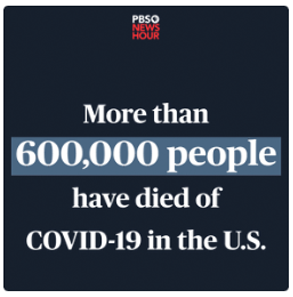Radar on Drug Benefits
-
PBM Sector Could Be Poised for ‘Profound Transformation’
In recent years, a harsh spotlight has been trained on PBMs, which stand accused of inflating the cost of prescription drugs and engaging in opaque business practices. While federal legislative reform has repeatedly foundered, state-based PBM regulations are proliferating. Meanwhile, the country’s three dominant PBMs have rolled out revamped models aimed at answering calls for rebate pass-through, simplicity and transparency.
With all those moving parts, what lies ahead for an embattled industry, which includes disruption-minded startups as well as the oft-criticized, vertically integrated CVS Caremark, Express Scripts and Optum Rx?
“There’s a frustration with the business practices, but I do think it’s addressable,” says Dan Mendelson, CEO of Morgan Health and founder of the consulting firm Avalere. “When the nursing home industry had all sorts of problems, they figured out a regulatory construct that was going to work for them and work for the government, and we’re at one of those points right now [with PBMs].”
For Radar on Drug Benefits’ final issue, we asked industry experts what they think is in store for the PBM sector — in terms of reform, innovation, diversification and more.

-
Payers May Cover Experimental Multiple Sclerosis Treatment Despite High Cost
A recent analysis from the Institute for Clinical Economic Review (ICER) found that the likely price of tolebrutinib, an experimental multiple sclerosis medication, greatly exceeds the organization’s cost-effectiveness threshold. However, Foluso Agboola, ICER’s senior vice president of research, tells AIS Health that payers may still cover the medication because there are currently no FDA-approved medications for non-active secondary progressive MS (SPMS).
Sanofi, the drug’s manufacturer, has not disclosed the list price of tolebrutinib, on which the FDA is expected to make an approval decision on in September. ICER assumed the list price would be $115,000 based on projections from IPD Analytics, a price that is similar to other branded oral MS drugs. But based on its analysis, ICER estimated that tolebrutinib would meet the commonly cited cost-effectiveness thresholds at an annual price of $3,250 to $5,900. Agboola observes that even though PBMs typically negotiate discounts off drugs’ list prices, there would need to be a “very huge discount” for the medication to be cost-effective.

-
Employers Tap Risk Managers, Group Purchasing to Curtail Rx Costs
As employers struggle to get a handle on rising pharmacy benefit costs, various approaches, from working with pharmacy risk managers to joining a group purchasing arrangement, are available. Many of these offerings were in the spotlight at the Employer Forum on Pharmacy Benefits, Specialty Drugs & Biopharma Therapies, held June 25 in Chicago.
During a fireside chat discussing successful employer strategies in pharmacy benefits, Jason Duhon, director of total rewards at Caterpillar, Inc., explained that his company began really paying attention to benefit costs around 2006 to 2008 when it saw the prescription drug trend rising. Specialty drugs and their potential to represent half of the total drug spend were just starting to be part of the discussion, and the company began partnering with a local pharmacist on how to streamline the supply chain and possible opportunities to slow that trend.

-
News Briefs: CalPERS Signs PBM Deal With CVS Caremark
The California Public Employees’ Retirement System (CalPERS) said on July 15 that it had agreed to a PBM contract with CVS Caremark. The five-year deal starts on Jan. 1, 2026, and includes about 587,000 CalPERS members who are enrolled in Medicare PPO and HMO plans. CalPERS said it contracted with Caremark “because of its demonstrated ability to deliver more affordable drug benefits and its commitment to performance guarantees in key areas such as managing pharmacy cost trends and ensuring clinical quality.”
BofA Securities analysts wrote in a July 16 research note that the “CalPERS contract win is a clear positive for CVS as it introduces some early momentum into 2026 and positions the company to exceed [Wall] Street expectations next year.” UnitedHealth Group’s Optum Rx previously held the CalPERS contract.

-
House Could Introduce New PBM Reform Package ‘Very Soon’
In the scramble to pass the “One Big Beautiful Bill Act,” PBM reform provisions targeting Medicare and Medicaid were stripped from President Donald Trump’s signature domestic policy bill.
However, proponents of industry reform are not giving up — and one source says the House of Representatives is poised to introduce a package of PBM-related policies that could finally address the issue at the federal level.












